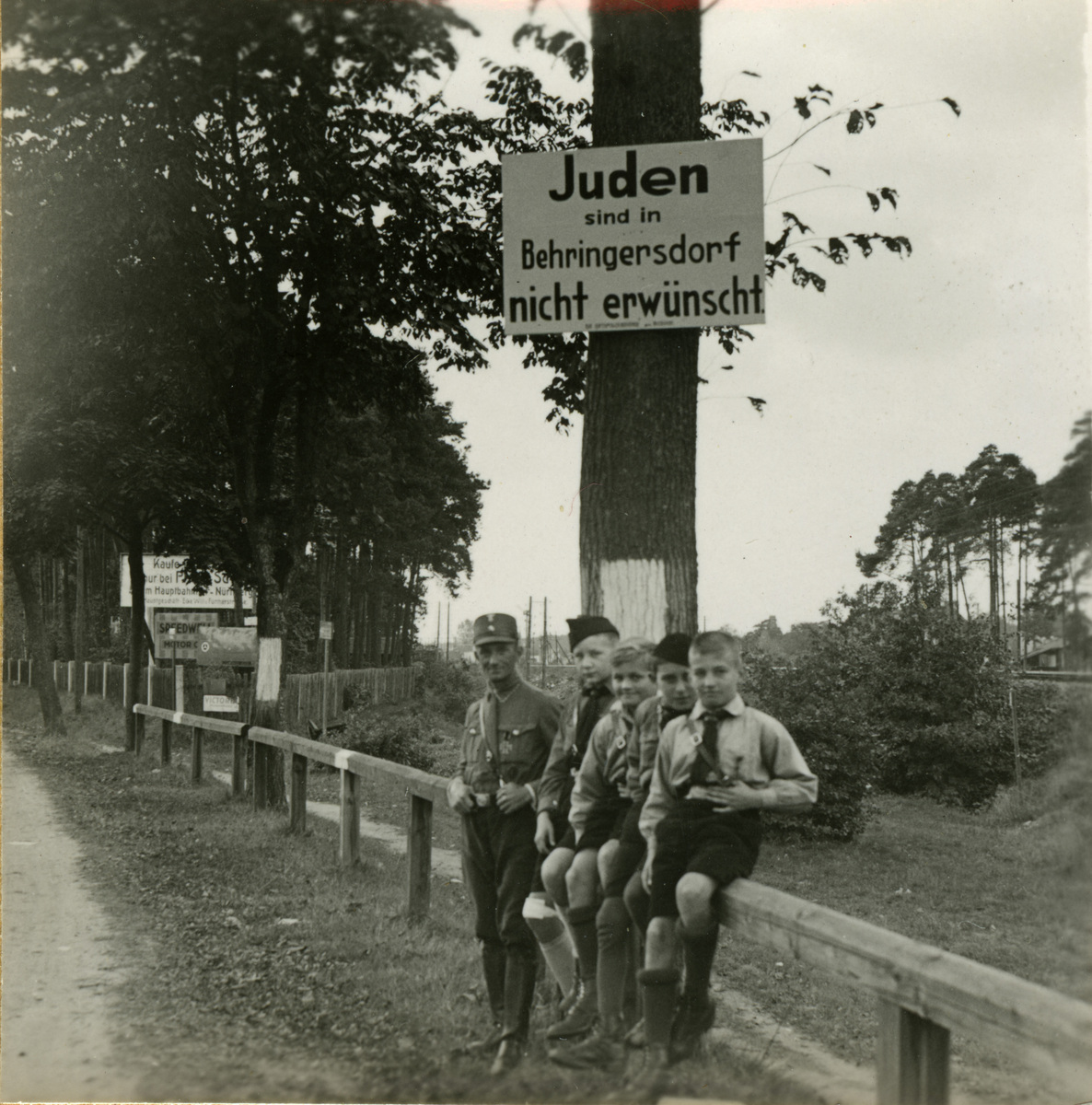Source

Source: Photo: Otto Schönstein, Behringersdorf, 1933. Deutsches Historisches Museum, Berlin. Inv.-Nr.: Schönstein 2506.
After Hitler was appointed Chancellor on January 30, 1933, the speed with which Jews were excluded from everyday life varied from place to place. Towns with a stronger affinity for the Nazi party and its auxiliaries, such as the SA [Sturmabteilung] and the Hitler Youth [Hitler Jugend or HJ), introduced exclusionary measures quickly. The sign featured below, which reads “Jews are not wanted in Behringersdorf,” comes from a small town near Nuremberg. A group of SA and HJ members are seen posing underneath it. Particularly striking is the Hitler Youth member in the middle. His pleased expression makes clear that some Germans welcomed these new exclusionary declarations. While largely unsuccessful on a countrywide basis, the Nazi regime’s national boycott of Jewish businesses in April 1933, helped sanction and legitimize such local examples of public ostracism.

Source: Photo: Otto Schönstein, Behringersdorf, 1933. Deutsches Historisches Museum, Berlin. Inv.-Nr.: Schönstein 2506.